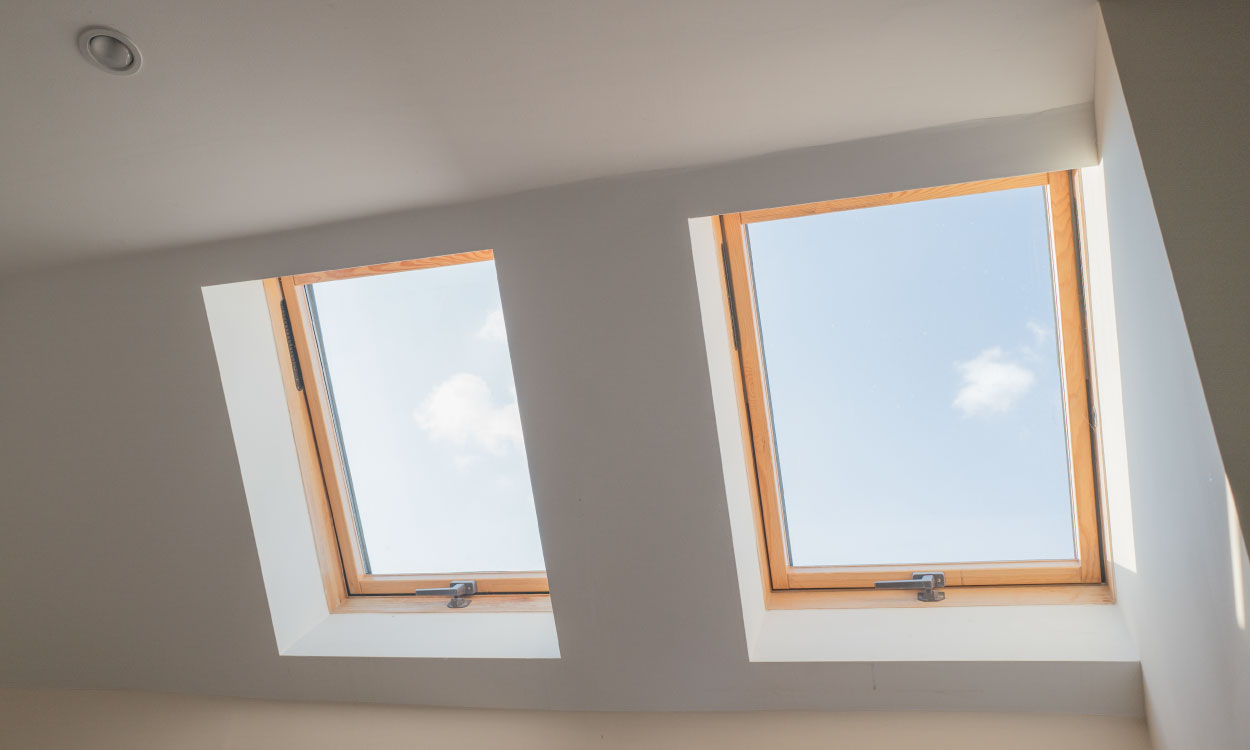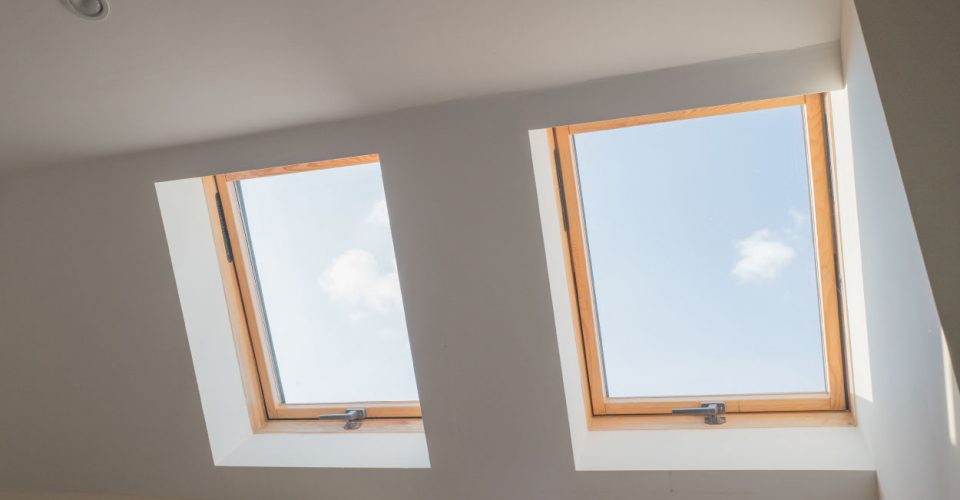Do You Need Planning Permission For a Velux Window?
Velux windows are one of the most popular ways to add natural light and ventilation to a loft or attic space after a conversion. These windows are both stylish and functional, but before one is installed, it is important to know whether or not you’ll need planning permission.
In this article, we’ll explain everything you need to know about installing a Velux window in your home.
Read on for more information…

What are Velux windows?
A Velux window is a type of roof window that is designed to bring natural light into attics, lofts and other rooms on the top floor of a house. A Danish brand, it has become the most popular type of roof window in the industry, and the brand name has become so famous that it is now used generically to describe any roof window.
Velux windows can be installed on pitched or flat roofs and are available in a whole host of styles and designs. They are typically used in loft conversions or attic extensions to provide more natural light and ventilation without having to make significant alterations to the roof’s structure.
Benefits of a Velux window
Velux windows provide a wide range of benefits, including the following:
- Increased natural light: Roof windows allow daylight into upper-floor spaces that would otherwise be dark.
- Improved ventilation: They help to regulate airflow and reduce condensation and mould.
- Energy efficiency: Modern Velux windows are built with high-performance glazing that improves insulation and can even reduce energy bills.
- Enhanced property value: By adding natural light and more usable spaces to a property, it can boost its value.
- Space saving: Because Velux windows are built into the roof, they do not take up much space or require any structural changes to the roof itself.
- Aesthetic appeal: Velux windows create a clean, modern look that can make even small rooms feel much larger.
Do you need planning permission for a Velux window?
In most cases, planning permission is not required for Velux windows. Usually, they fall under permitted development rights, which allow minor alterations to be made to a property without full planning permission.
However, there are some circumstances when planning permission will be required. This includes:
- If the roof window protrudes more than 150mm above the roof plane: If the Velux window sticks out too far from the roofline, it exceeds permitted development limits.
- The window exceeds the highest point of the roof: Roof windows cannot extend above the roof’s ridge line.
- A side-facing roof window without privacy glazing: If the window faces a neighbouring property, it needs obscure glass to protect privacy.
- A side-facing window installed with less than 1.7 metres above the room’s floor: Windows at lower heights that could overlook neighbours will need planning permission.
- You live in a conservation area or a listed building: Homes in protected zones are subject to much stricter planning rules, and even minor changes will likely need formal approval.
If you’re unsure, it’s always worth checking with your local planning authority to see whether you need planning permission.
How to get planning permission for Velux windows
If your project does require planning permission, the process is straightforward when handled correctly. All you need to do is complete the following steps:
- Make sure you need permission: Before applying, double-check whether you actually need planning permission. If you live in a conservation area or the building is listed, you will almost certainly need approval.
- Prepare the application: You’ll need detailed architectural drawings that show the existing roof and where the Velux windows are going to go. Information regarding dimensions and materials will also be needed.
- Speak with neighbours: While this is not mandatory, it’s good practice to speak you your neighbours regarding the work. This can help minimise the risk of disputes down the line.
- Submit the application: Apply for the planning permission directly with your local authority. Fees vary, but on average will cost around £200.
- Follow up and respond: If the council require any further information, make sure you are proactively responding to queries to clarify issues as quickly as possible.
- Finalise permission and start the work: Once approved, you’ll be allowed to proceed with the installation. Usually, a decision will be made within eight weeks.
Rules and regulations for Velux windows
Even if planning permission is not needed, your installation must still comply with building regulations. Some things that need to be considered include:
Structural integrity
The roof must be strong enough to support the new window. This may require reinforcement or supporting beams.
Fire safety
All materials must comply with fire safety standards to ensure they prevent a fire if one occurs.
Thermal efficiency
Velux windows must meet minimum U-value standards to prevent heat loss. Most modern windows will meet this criteria as standard, but you should check first.
Ventilation
Rooms must have adequate airflow. Trickle vents or opening features in the design can help with this.
Glazing
The glass must be of the highest safety standards, preventing injury if they do break.
What’s the four year rule?
The four-year rule is a planning concept that applies to some unauthorised building work in the UK. If the development has been in place for four years or more without any action being taken, it will become lawful retrospectively. This rule applies to Velux windows if they stick out more than they should or have been installed in a conservation area.
However, this rule should never be relied upon as it can cause serious problems, including:
- Risk of enforcement: The council will be able to issue you with an enforcement notice at any time within four years, forcing you to alter the work at your expense.
- Financial impact: Retrospective work will need to be paid for out of your own pocket.
- Uncertainty: In some cases, the work may still not be considered lawful even after four years have elapsed, and you’ll live with the knowledge that you can be hit with an enforcement notice at any time.
- Negative relationship with neighbours: Unapproved windows can overlook your neighbours’ property, which can lead to conflict.
- Insurance implications: Work done without permission can invalidate home insurance.
Final Thoughts
In summary, installing a Velux window is a great way to improve your home’s comfort, energy efficiency and overall appearance, often without needing planning permission. However, there are clear exceptions, particularly if your property is in a conservation area, the design extends above the roofline, or it affects neighbouring privacy.
To avoid costly mistakes or enforcement action, always check with your local planning authority before beginning any work and make sure your installation complies with building regulations. With the right preparation and professional advice, a Velux window can be a straightforward, compliant upgrade that adds lasting light and value to your home.


